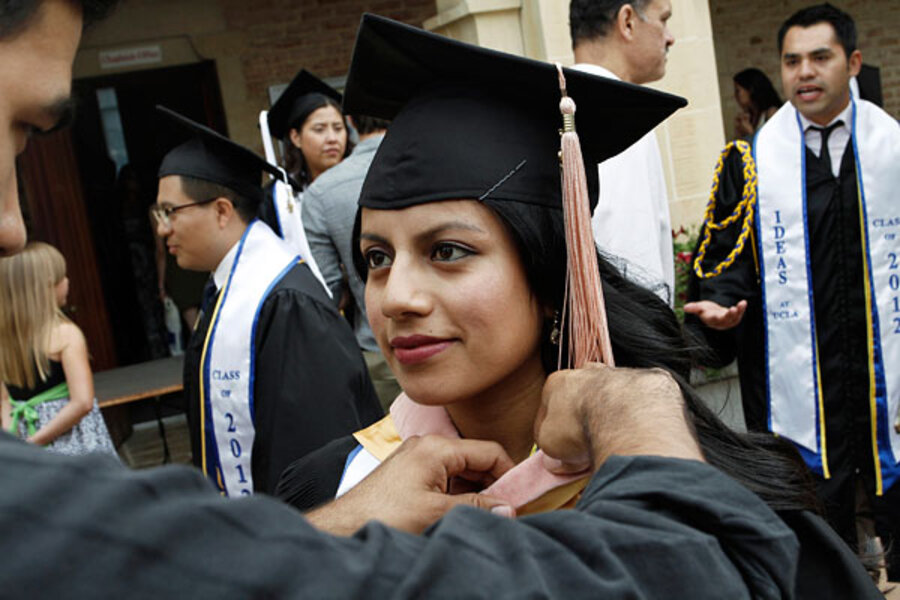The two most emotionally and politically charged issues are often linked together as two sides of the same immigration reform bargain: Immigrant advocates will get legalization for many of those in the country illegally, while border hawks will get ramped-up measures to stem illegal immigration.
Legislators are expected to offer beefier border security as well as the implementation of a long-awaited system for better tracking the entry and exit of those who come to the US legally. As many as 4 in 10 of the nation’s undocumented population are estimated to have come to America legally and then overstayed their visas.
Lawmakers would love a Border Security Index – a single number that would loop in all the various factors that constitute a secure border. How many attempted border crossings are stopped? How many tons of drugs interdicted? How high is the crime rate along the border?
But Homeland Security Secretary Janet Napolitano recently said that isn’t happening.
Instead, lawmakers are going to have to take a more qualitative approach to certifying that the border is secure. Options could include a council of Southwest border state leaders tasked with the job or annual congressional votes certifying a secure border.
The certification question is key because both the House and the Senate are not expected to offer those in the country illegally any permanent status before the border is certified as secure. (Before such point, however, unauthorized immigrants would likely be able to gain a legal status after paying a fine and meeting other eligibility criteria that would allow them to work.)
Once a certification procedure is in place, the next question would be how lawmakers get undocumented immigrants to citizenship.
For young people brought into the US by their parents (a group known generally as DREAMers, after the long-stalled DREAM Act that would give them legal status), both chambers appear to be willing to allow these young people a special route to citizenship. Agricultural workers are also likely to get similar special treatment.
For everyone else, however, there’s a general if unspoken consensus that a unique road to citizenship available only to the undocumented won’t be part of the final bill. Instead, lawmakers are trying to decipher how to fit millions of people through a new and improved legal immigration system.
“Those who entered illegally as adults will only be allowed to participate in the new and improved guest worker and visa programs,” said Rep. Raul Labrador (R) of Idaho, a key immigration negotiator, in an op-ed in the Los Angeles Times on Sunday.
This issue is that the current pipeline for legal immigration handles only about 1 million new permanent residents per year. Squeezing as many as 10 million potential citizens through that pipeline could take more than 20 years – a prospect that many immigration advocates say is unacceptable.
Only the compromises in the final legislation will show how lawmakers plan to thread that policy needle.







